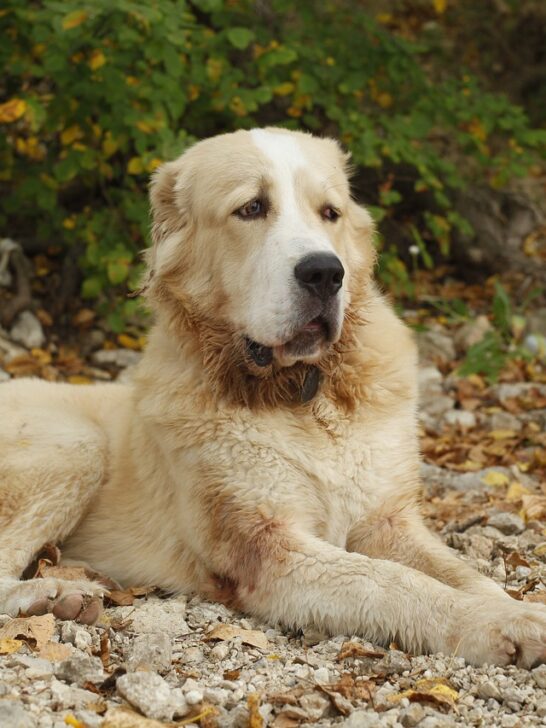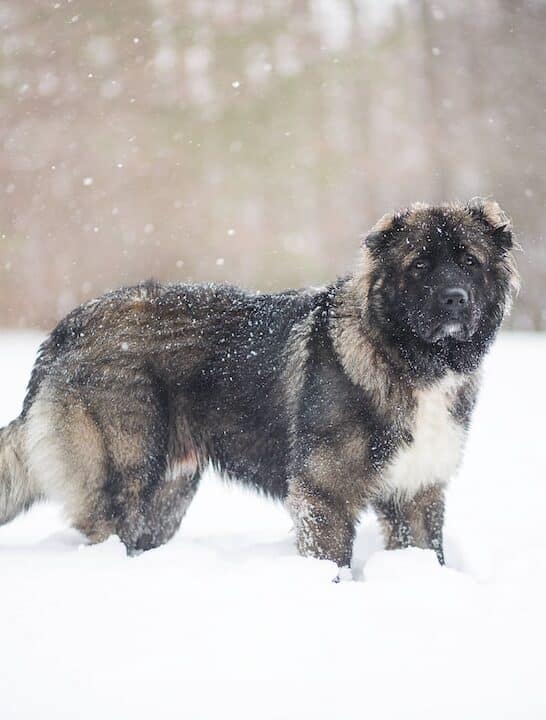When Do German Shepherds Stop Growing? What to Expect as Your Puppy Grows
There is no doubt the adult German Shepherd dog can grow up to be really big! However, a variety of factors can also influence how large your GSD grows up to be.
But the biggest surprise to many first-time German Shepherd dog owners is how long it can take a German Shepherd puppy to grow up to its full adult size. This process often stretches out over 36 months or longer!
Of course, the very day your GSD puppy comes home with you, you are already planning, taking into account your dog’s changing needs for food, bedding, activity, veterinary care, crates, and more.
But is there any way you can know for sure when your dog will stop growing? In this article, you will learn step by step exactly what to expect as your GSD grows up.

Watch a German Shepherd Puppy Growing Up!
If you are more of a visual learner or are just in a hurry to see how this whole “growing up process” might play out, you will love the short video you are about to watch.
In this video, owners show the time-stamped growth process of their German Shepherd puppy from the age of seven weeks old up to two years old. The transformation is astonishing.
For an even shorter, sweeter look at the German Shepherd puppy growing up process from seven weeks to one year, and then from one year to two years old, this American Kennel Club (AKC) video is chock-full of cuteness as well as useful information!
How Long Does It Take for a German Shepherd Puppy to Grow Up?
Even though the videos you just watched both stop at the two-year mark, you should know that the growth process could extend as long as three years (36 months).
As a general rule of thumb, you can expect that the majority of the growing up process will likely be concluded by around 24 months. First-time owners can be easily convinced their GSD puppy is done growing at 12 months!
But while the growth rate and visible change will slow down after 12 months have passed, it won’t stop. The additional growth will be more subtle and more internal – so not so easily seen.
This is important for you to know as a GSD owner! Just because you can’t see the growth as easily, you still need to remain very mindful of the delicate process inside your dog, which we will talk about in the next section here.
What Happens Inside the Body As a Small GSD Puppy Gets Big?
As Canine Weekly explains, inside your GSD puppy’s body, the bones are growing and going all out to develop the healthiest, strongest skeleton to support your dog’s adult body.
The growth process is not unlike what happens as children grow up!
In other words, for your puppy to grow bigger, their bones first have to grow bigger. This requires a partnership between bone and cartilage. This partnership takes place within centers called growth plates.
The growth plates are located at the ends of the long skeletal bones. Inside each growth plate is an area that is responsible for generating new bone tissue.
This is the most important fact to cement into your memory. As long as the growth plates are still producing new bone tissue, they are relatively soft. The tissue the growth plates are producing is also soft and flexible.
Only once your German Shepherd puppy has finally grown up as much as they are going to do will these growth plates and their tissues harden fully.
Since you can’t always tell visually when this process has stopped occurring, you need to err on the side of caution.
How to Take Special Care of Your GSD Puppy’s Growth Plates
Your dog’s veterinarian can be a great help during the sensitive months and years of the growth process.
There are two important things you need to do to protect and support your GSD puppy to reach their full adult height, weight, and size safely and healthily.
1. Provide an appropriate whole and complete large breed puppy diet
Your dog’s veterinarian will be a key partner for you in making sure your growing puppy is taking in the right amount of essential nutrients, vitamins, trace minerals, and calories.
In most cases, you will be guided to feed a puppy food formulated specifically for large breed puppies that will grow up more slowly over a longer period.
However, if you are feeding a raw diet or making your homemade dog food, you will need to work even more closely with your dog’s veterinarian to make sure your puppy gets the right supplements to feed their growing body.
Just as feeding the wrong food can cause your puppy to grow up too fast, so too can feeding the wrong food stunt growth and cause problems and pain through your German Shepherd’s life.
2. Guard against over-exertion in play, exercise, and athletics
As the American Kennel Club (AKC) points out, large breed puppies are known to be more vulnerable to exercise-induced injury while they are still growing.
This is because the growth process takes longer and also because their skeletal systems are supporting a great deal of weight.
While no official study exists to definitively say when it is safe to let your GSD make use of their considerable natural athletic ability, your veterinarian can help you assess when and how to add in additional activity as your puppy grows up.
Here, you might be wondering how you are going to deal with so much rambunctious puppy when you have exercise restrictions!
But it is important to remember that mental activity is just as stimulating and tiring to smart dogs like the German Shepherd! GSDs are intensely people-oriented and eager to please and will take readily to training sessions and obedience school.
German Shepherd puppies can still exercise, by trying interspersing walks or short runs with the mental stimulation of training sessions to keep your pup from over-exerting.
What Are the Warning Signs of Over-Exertion for Growing GSD Puppies?
There are some warning signs to watch for to make sure your German Shepherd puppy isn’t over-taxing their still-growing growth plates and bones.
As the Royal Society for the Prevention of Cruelty to Animals (RSCPA) explains, over-exercising a growing puppy can lead to several musculoskeletal problems even as they are still growing as well as in adulthood.
Here are the warning signs your GSD puppy may be over-exerting themselves:
- Panting heavily for an extended time frame.
- Slowing their pace during play or walks.
- Dragging behind you on walks.
- Stopping suddenly and laying down.
- Drooling, vomiting, or both.
- Lameness or limping.
How Much Exercise is Too Much for a GSD Puppy?
In general, you want to aim for a moderate daily activity that is a combination of training, free play, interactive play with you and walks of one mile or less.
Longer walks, hikes or jogs may be too much for your GSD puppy even if you don’t see any of the warning signs listed above here.
Tug of war, frisbee, tethered bike rides or runs and any type of activity that forces your dog to keep up with you should be avoided at all costs.
Does Growth Differ Between Male and Female Adult German Shepherd Dogs?
Now that you understand why learning more about German Shepherd puppy growth rates is so vitally important for your dog’s health, the next natural question focuses on gender and growth rates.
After all, the official breed standard for the German Shepherd dog states that adult dogs can stand between 22 and 26 inches tall (paw pads to shoulders) and weigh anywhere from 50 to 90 pounds.
The official breed standard also specifies that adult male GSDs often stand taller and weigh more than adult female GSDs. Typically, an adult male will stand two inches taller and weigh anywhere from 15 to 20 pounds more than an adult female.
You likely noticed that in the introduction here, we mentioned that German Shepherd puppies can continue growing for up to 36 months. Then we went on to say that in some cases the majority of growth is completed within 24 months.
This is exactly why. A bigger German shepherd male dog is likely to continue growing for a longer period because the skeleton can only grow so fast.
Panosteitis: “Growing Pains” in a German Shepherd Dog
Even so, the United Federation of Animal Welfare (UFAW) explains that some GSD puppies will develop a condition called panosteitis, a painful inflammation of the bone marrow.
Panosteitis is sometimes nicknamed “growing pains” because it occurs during a puppy’s growing up period. The bone marrow will become inflamed and sore, sometimes to a level where it becomes excruciating to your dog.
In most cases, panosteitis will last anywhere from a few days to a few weeks or even longer and then dissipate. It may recur several times while your GSD puppy is still growing.
While panosteitis lasts, your puppy may limp, whine, whimper, and exhibit lameness that seems to move from one leg to another in no apparent pattern.
Panosteitis is thought to have genetic (heritable) origins and is unfortunately quite common in the German Shepherd breed. However, researchers don’t understand how to limit panosteitis in GSD puppies or even what genes (if any) may contribute to the condition.
Treating panosteitis usually involves giving a GSD puppy pain medications. Unfortunately, many pain medications have uncomfortable side effects, including stomach upset, gastrointestinal distress.
Does My GSD Puppy Have Panosteitis or Degenerative Myelopathy or Dysplasia?
According to the Orthopedic Foundation For Animals’ Canine Health Information Center (CHIC) database, the German Shepherd dog may develop several additional known heritable health issues in addition to panosteitis (which is not listed in that database).
These issues include the following:
- Hip dysplasia.
- Elbow dysplasia.
- Degenerative myelopathy.
- Cardiac and eye issues.
- Autoimmune thyroiditis.
Because the German Shepherd breed can inherit several conditions that can affect the joints, bones, and muscles of the body, it can be challenging to know what is causing health symptoms you may see in your GSD puppy.
Is it panosteitis, growing pains?
Or could it be hip or elbow dysplasia, where the ball socket of the elbow or hip joint fails to form properly?
Or could it be degenerative myelopathy, which is a degenerative and progressive genetic health condition that causes deterioration of the nerves in the spinal column that eventually results in hindquarters paralysis but (it is thought) no pain?
Or could it perhaps simply be that your GSD puppy over-exercised and is stiff and sore?
There is only one individual who can determine what is causing any lameness, pain, or other concerning health symptoms you may be observing in your German Shepherd puppy, and that person is your dog’s veterinarian.
As you now know, panosteitis is only really treatable by temporarily limiting activity and offering pain medications, which may have their side effects.
Hip and elbow dysplasia is treatable by physical therapy (in mild cases) and surgery (in serious cases).
Degenerative myelopathy has no real treatment or cure. In some cases, physical therapy may help improve mobility while the option remains.
A General Timeline of German Shepherd Puppy Growth
If you watched the YouTube videos in the earlier section here, you already saw how quickly a German Shepherd puppy can go from looking like an adorable little teddy bear to a sleek and serious adult canine.
Here is a general timeline you can use for major growth benchmarks that may include upgrading your German Shepherd’s crate, kennel, dog bed, collar and leash, food, and toys.
Neonatal period: whelping to 10 days
You likely hadn’t yet met your puppy before they passed quickly through this stage, which ends around 10 days after birth when the puppy first opens their eyes.
Transitional period: 10 to 20 days
This is another period that takes place before you and your puppy meet.
During the transitional period, your GSD puppy gets used to the active, visual world going on all around them, including the presence of littermates.
Socialization period: three weeks to three months
The socialization phase is incredibly important to help your young German Shepherd puppy get on in the company of others, which includes other dogs, other animals, and, of course, people.
Because so much positive socialization happens while your pup is still with their mom and littermates, it is important not to take your German Shepherd puppy home too soon!
Juvenile period: three months to six months
Starting around the age of three months, your German Shepherd puppy heads straight into serious “puppyhood,” with all the rambunctiousness, curiosity, high energy, short attention span, and dis(obedience) puppy owners have come to expect.
Obedience training and training, in general, should be introduced promptly, and before your GSD starts to mature sexually at around the age of five months.
Adolescent period: six months to 24 months
The adolescent period represents perhaps the most visually evident portion of your GSD puppy’s growth spurt. At some point in this period (whenever your dog’s veterinarian advises), you will also switch from puppy food to adult dog food.
Your little dog will become a big dog right before your eyes! The puppy coat will transition to the adult coat. This is when it is advisable to have your puppy “fixed” (unless you plan to breed your dog) to control hormonal behavior issues.
By the end of 24 months, you will have a mostly or fully adult German Shepherd dog at your side.
Adult period: 24 months to six years
Depending on your German Shepherd’s gender and genetics, your dog may reach full adult weight, height, and size by 24 months or may continue growing for up to another 12 months.
Regardless, the trials and tribulations of puppyhood will, at last, begin to fade and you will bask in the brilliant sunlight of the loyal, loving, affectionate dog that is America’s second most popular purebred dog breed, the German Shepherd dog.
Senior period: six years onward
German Shepherd dogs, like many large and giant breed dogs, have relatively brief life expectancies. The GSD typically lives between seven and 10 years.
Caring for Your Growing German Shepherd Puppy
As you now understand, the growth timeline for a German Shepherd puppy is not set in stone and is also the most critically important phase for your dog’s health.
For this reason, don’t ever hesitate to contact your dog’s veterinarian if you have questions as your GSD puppy is growing up.




















